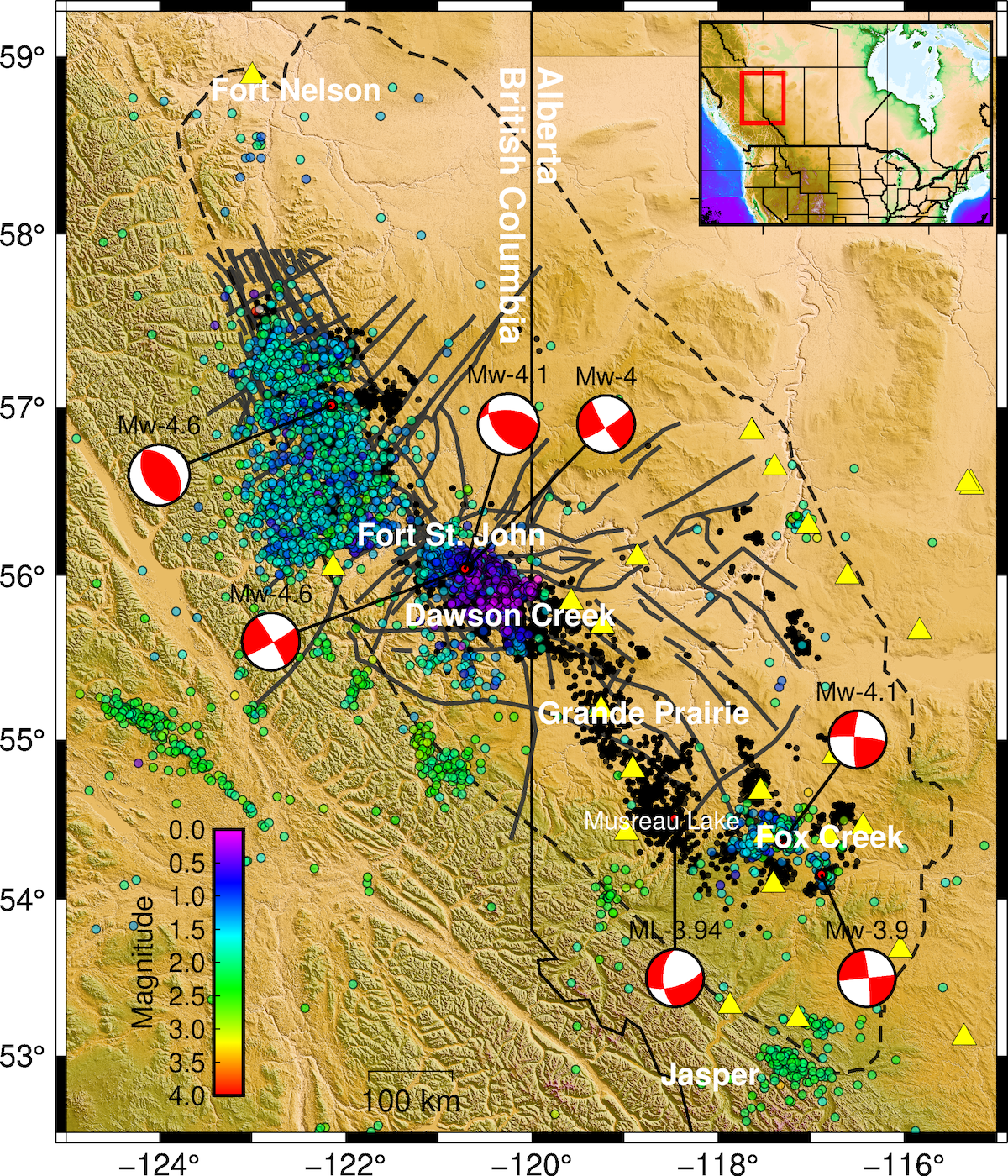Scientists from the University of Waterloo have developed a map showing which regions and population centres of Western Canada are likely to experience earthquakes induced by underground energy extraction.
Hydraulic fracturing is used to produce cracks in the rock formation to enhance energy extraction from geothermal and unconventional resources. This process is typically accompanied by seismicity, or induced earthquakes, because injection changes pore pressures and temperatures, facilitating slippage of fractures and faults.

The map shows earthquakes related to hydraulic fracture. Major earthquakes are represented with red and white graphics.
“We are trying to better understand and therefore better predict the phenomenon of induced seismicity during subsurface engineering processes,” said Water Institute member Maurice Dusseault, a professor of engineering geology at Waterloo. “Using Western Canada’s Montney Formation as a case study is important as the 130,000 km2 area of western Alberta and northeast British Columbia is home to some of the world's largest petroleum and natural gas reserves.”
The report concluded induced earthquakes in this region continue to threaten communities that have already experienced of the largest fracking-caused earthquakes reported worldwide. This includes a magnitude 4.6 near Fort St. John, British Columbia on November 29, 2018, and a magnitude 4.1 near Fox Creek, Alberta on January 12, 2015.
“The majority of injection-induced seismicity occurred near Fort St. John, British Columbia—close to the border of Alberta,” said Ali Yaghoubi, the study's lead author and PhD candidate in the Department of Earth and Environmental Sciences at Waterloo. “When I compare the seismicity map with the population density map of Canada, some earthquake-prone areas are indeed populated. However, the majority of seismogenic areas aren’t populated.”
They also found that the area south of Grande Prairie, Alberta is far less prone to significant levels of induced seismicity, despite the fact that the Montney and Duverney formations in the region have been subjected to more than 700 multistage hydraulic fracturing operations. “This is particularly important considering that the area is home to Alberta's No.1 geothermal project,” said Yaghoubi.
Their map can serve as a baseline for future fluid injection projects or underground energy extraction in the region including wastewater disposal, hydraulic fracture stimulation, carbon sequestration, as well as geothermal energy extraction.
The study, Injection-induced fault slip assessment in Montney Formation in Western Canada was recently published in the academic journal Scientific Reports, a Nature Group publication.